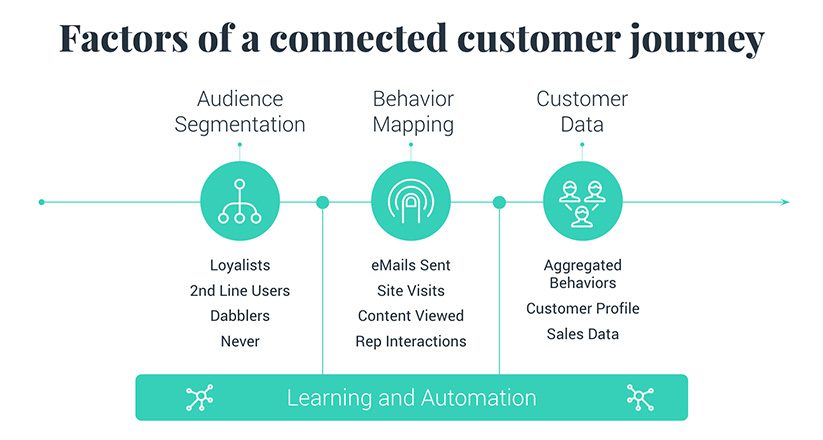Article
At the Intersection of Engagement and Analytics
March 2021

Can you tie social media into your omnichannel strategy?
Social media forced its way into the marketing mix with the speed and impact of a bullet train. Seemingly overnight, marketers needed a well-devised strategy for social media as a reliable channel for direct customer engagement. Simultaneously, business executives were discovering and integrating analytics and metrics across all their digital channels. But just where and how can these two parallel paths intersect?
“There’s no question social media has proven to be a great place to start conversations with people in your target audience. It’s an endless top-line funnel. The challenge comes in trying to capture these momentary interactions as data points and follow any expanding ripples out until you can convert those data points into longer-term, actionable insights.” —- Justin Grossman, CEO/Managing Partner, meltmedia —-
Grossman contends this conversion will get even more difficult as privacy concerns become privacy policies then privacy laws. “The bigger social media gets, the more it will be regulated — just like print, and radio, and films, and television, and internet, and every other marketing channel that came before. We’re already seeing the impact of internet policies like GDPR and CCPA. What that could mean for social media is even greater limitation for collecting usable data and connecting it into an omnichannel metrics strategy.”
So just what can you do?
Incite Your Audience to Take Trackable Actions
Chris Jambor, Analytics Engineer, meltmedia, offered this promising solution, “There is a rich data set out there and you have to do more than just see if someone clicked on a link. If you truly want to determine if you’ve reached the right audience, you’ve got to incite them to take actions you can track. Then, be savvy enough to tag them with unique identifiers that you’ll be able to trace and aggregate without putting personal privacy at risk.”
The onus of responsibility doesn’t have to fall solely on the shoulders of Marketers and Developers. There are tools available and established protocol models to follow for collecting, anonymizing, and warehousing data. These tools let you keep the data you need or want to own, while also sending a protected version of the data to other sources for analysis and strategy development. The tech stack that meltmedia uses includes both off-the-shelf and proprietary tools.
You may not know that while Google Analytics pulls in a large amount of data, they may only share a portion of that data (a sample) to give you the directional intention of the data. With other tools to supplement Google, you can dig into all your data. Ultimately, this gives you better visibility to more complete actions from your social media funnel than Google alone shares with you.
By leveraging this unknown 3rd party data, you can then find ways to unmask it and turn it into 1st party identifiable data.
4 Ways to Unmask 3rd Party Data
Here are a few examples of actions you can take through social media to make that happen:
- Polls and surveys that take the pulse of your customer base
- Encouraging enrollment or subscription in order to build a support community or disease education program
- Registering customers for speaker’s bureau or webinar sessions with key opinion leaders
- Sharing charitable service opportunities, encouraging customers to sign up and participate
“After you’ve converted the personal data from actions like the examples above,” Jambor explained, “you can then follow the respondent’s journey as the ripples expand your outreach. At meltmedia, we call this journey analytics or the connected customer journey.”
Such a journey might look something like this:

For some of your customers, the journey will start with social media. Knowing this origination point will be a critical factor in helping you effectively gather the data you want to capture.
Grossman concluded, “This is how we tie social media into omnichannel data reporting. We take the conversion of collected data further. We track how engaged a specific user is then follow them to trace their impact on others with similar target attributes, all while protecting them from individual scrutiny.”
About the Author

Sue Zobrist
What to Explore Next

